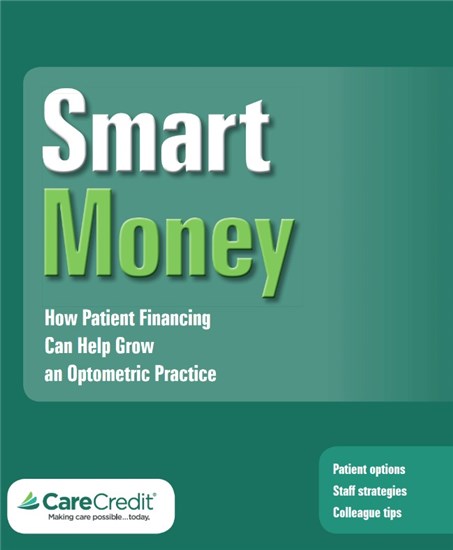When it comes to patients, choose your words wisely

SPONSORED CONTENT
“Think twice before you speak, because your words and influence plant the seed of either success or failure in the mind of another.”–Napoleon Hill
Research suggests that the average human speaks around 16,000 words a day.1 That’s a lot of words. And a lot of opportunities to encourage and influence others. Word choices are especially important when interactions are limited in scope and length – like patient conversations. For example, the most important telephone call to the office – the new patient call – is usually quick, lasting less than five minutes. Yet it is during this call that your prospective patient determines whether or not they will set (and keep) an appointment. And remember, that critical “first impression” is often made in seconds.
In the practice, how your patients are welcomed can dramatically impact their perception of your team and influence their decision to purchase and/or return for ongoing vision care. The financial discussion is another key patient dialogue that directly affects your patient’s ability and desire to walk out of the office with the vision products they not only need – but want.
Conversations should, of course, be authentic. Scripting is useful, though, for inspiration and training. The key is to start all of your patient conversations with the end in mind – focusing on what you want to accomplish and what you want the patient to know, feel and do. Once you’ve identified what the end goal is, you can choose words that inspire that result. Do you want patients to:
Click HERE or the image above to download a guide from CareCredit on implementing patient financing in your practice.
Know you have been serving the community for more than 20 years…
Feel they can trust you and your staff to provide great care…
Do set an appointment?
Then your initial telephone conversation may go something like:
“Good morning, thank you for choosing Main Street Optometry.”
“Yes, I haven’t had an eye exam in quite some time and would like to make an appointment.”
“We’re glad you’re committed to your eye and vision health. Dr. Smith has been serving our community for more than 20 years, so you probably know a few people who trust him with their vision care. In fact, quite a few of our patients personally recommend us to their friends or family members. I can reserve time on Dr. Smith’s schedule for you. First, may I gather some information from you?”
By making a few little word swaps, you can positively impact your practice in a big way. Here are just a few words you can choose and use:
You versus I/we: use “you” instead of “I” or “we,” and the conversation naturally focuses on the patient, his or her needs and wants, instead of the practice. Additionally, when you use the word “you,” patients subconsciously fill in the “you” with their own name, making the dialogue personal.2
Choices versus options: People like the ability and the control to choose what they want. “Options” is a passive word. “Choices” is an active word that gently directs the patient to make a selection.
Prescribed care versus recommendations: Communicate the doctor’s expertise to patients by describing their vision and eyecare needs as “prescribed,” not “recommended.” Recommended doesn’t accurately communicate the necessity of care.
Personally recommended versus referred: When patients send friends or family into the practice, they are being “personally recommended,” not “referred.” “Personally recommended” implies a much deeper level of trust and satisfaction.
These are only a few of the wise word swaps your team can consider making during their patient conversations. Additionally, there are three key words/phrases that are powerful in any dialogue, including between practice team members, because they enhance understanding, which is the essence of good communication.
“Designer frames have become the ultimate fashion accessory and CareCredit makes it so much easier for patients to get the styles they really want. We’ve only been with CareCredit a year and have already seen the positive impact it’s had on our patients’ purchasing power.”
–Edward Schwartzberg, OD, Doctors On Sight
Because: Studies have shown that using “because” to provide an explanation, even a simple, obvious explanation, helps people form a connection between the “what” (action desired) and the “why” (benefits or reason).3
“Mrs. Smith, you should know you have many payment choices, including financing through the CareCredit healthcare credit card, because many of our patients prefer to purchase all the vision care and products they want right from our office and are able to comfortably pay over time.”
May I?: Along the patient journey, continually ask permission. When people give permission, they are more engaged in the conversation because they have subconsciously shifted to “wanting” the information you are providing.
“Mrs. Smith, may I share with you some new lens choices you now have available?”
Help me understand: Using the words “help me understand” communicates to the patient you want to help and want to know what is important to them.
“Mrs. Smith, help me understand what we can do to make it easier for you to leave us today with the products that will make you happy.”
Words matter. And, of course, so does the attitude behind the words. One of the best ways to ensure that your team’s attitude is aligned with superior patient care is to understand patients have choices, and at the end of the day, your team is impacting their lives in a very positive way.
To help educate your team on simple and effective ways of introducing financing options in different situations, enrolled providers can listen to scripts at CareCredit.com/letstalkoptical.
SOURCES
1 Matthias R. Mehl, Simine Vazire, Nairán Ramírez-Esparza, Richard B. Slatcher, James W. Pennebaker (2007) Are Women Really More Talkative Than Men? Science vol 317, issue 5834 pp 82
2 How to Use These 3 Hypnotic “Power Words” to Covertly Increase your Conversions Rates.
D Bnonn Tennant, Information Highway. Kissmetrics Blog
3 Influence: The Psychology of Persuasion, Robert Cialdini, 1984. or
Langer, E., Blank, A., & Chanowitz, B. (1978). The Mindlessness of Ostensibly Thoughtful Action: The Role of “Placebic” Information in Interpersonal Interaction. Journal of Personality and Social Psychology, 36(6), 635-642.
This content is subject to change without notice and?offered for informational use only. You are urged to consult with your?individual business, financial, legal, tax and/or other advisors with respect?to any information presented. Synchrony Financial and any of its?affiliates (collectively, “Synchrony”) make no representations or warranties?regarding this content and accept no liability for any loss or harm arising?from the use of the information provided. Your receipt of this material?constitutes your acceptance of these terms and conditions.
©2016 Synchrony Financial. All rights reserved. No reuse?without prior written consent from Synchrony Financial.




























